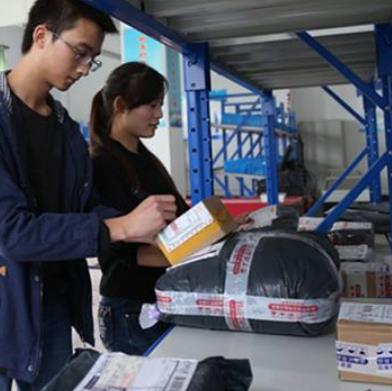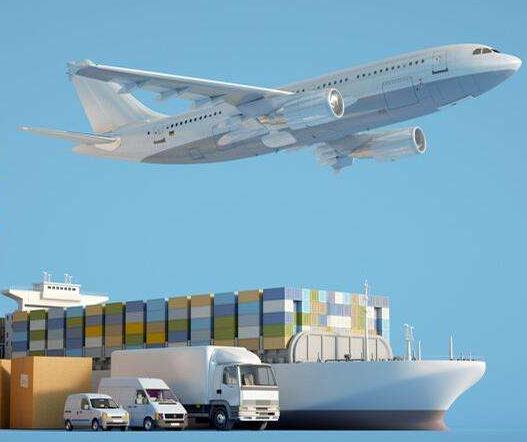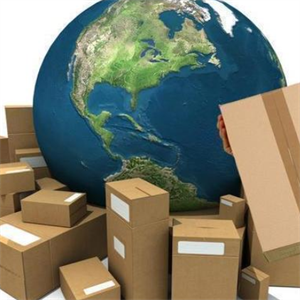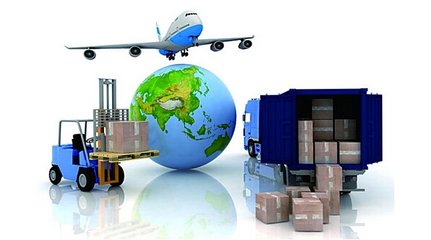In today's e-commerce era, the global logistics industry has a new development trend. The core goal of modern logistics service is to meet the needs of customers with small comprehensive costs in the whole logistics process.
With the rapid rise of e-commerce and the demand of the industry, the demand and requirements for the important link of warehousing, logistics and distribution are also increasing. Third party companies such as Smart Factory, which focus on e-commerce warehousing and logistics, are also playing an increasingly important role in the market industry, and can even help businesses to provide a wide range of services at the terminal and channel ends. The service of such enterprises is not just simple delivery, but more importantly, they need to do a good job in warehousing, inventory, logistics and distribution from the perspective of businesses, so that the overall process of e-commerce can develop well.
Modern logistics has the following four characteristics:
1. The close combination of e-commerce and logistics;
2. Modern logistics is the unification of logistics, information flow, capital flow and talent flow;
3. E-commerce logistics is the combination of informatization, automation, networking, intelligence and flexibility;
4. The standardization of logistics facilities and commodity packaging, and the socialization and integration of logistics are also new features of logistics mode under e-commerce.
Five components of modern logistics information technology:
1. Barcode technology
2. EDI technology
3. Radio frequency technology (RFID)
4. GIS technology (geographic information system)
5. GPS technology
The continuous development of e-commerce has made the logistics industry rise again. The logistics industry in the United States has provided far more services than warehousing, distribution and transportation. Logistics companies are increasingly providing warehousing, distribution facilities, maintenance services, electronic tracking and other value-added services. Logistics service providers are becoming customer service centers, processing and maintenance centers, information processing centers and financial centers. It is a constantly developing concept to add new services according to customer needs.
Compared with the developed logistics industry, China's logistics industry is still in the initial stage of development. The main characteristics of its development are: first, enterprise logistics is still the focus of the whole society's logistics activities, and the demand for specialized logistics services has begun to show signs, which indicates that the development level of China's logistics activities is still relatively low, Strengthening the internal logistics management of enterprises is still the focus of social logistics activities; Second, specialized logistics enterprises began to emerge, and diversified logistics services developed to a certain extent. It is urgent for China's logistics industry to go out of the logistics activity mode dominated by enterprise self service and develop third-party logistics; Third, the professional logistics started late, and China Logistics Mall was just launched, which is still in the development stage. Premier Wen Jiabao chaired an executive meeting on June 8, 2011, which discussed and deployed the work of promoting the healthy development of the logistics industry. The meeting agreed that China must develop and improve supporting policies and measures to promote the healthy development of the logistics industry, and proposed eight aspects at the meeting to promote the healthy development of logistics, At the same time, the Ministry of Transport issued the Notice on Carrying out Special Cleaning of Toll Roads to further promote the development of China's logistics.
Cold chain logistics
Cold chain logistics refers to a systematic project in which frozen food is always in a specified low temperature environment during production, storage, transportation, sales and before consumption to improve/increase food quality and reduce food consumption. It is established with the progress of science and technology and the development of refrigeration technology. It is a cryogenic logistics process based on refrigeration technology and means of refrigeration technology; It is a special logistics form that requires special devices, and needs to pay attention to the transportation process, time control, transportation type, and logistics cost.
Agile logistics
Agile Logistics is also known as Agile Supply Chain. Most Chinese logistics companies refer to agile logistics as "wuliuku". With core logistics enterprises as the center, agile logistics (transit logistics) uses scientific and technological means to control capital flow, logistics, and information flow, and integrates suppliers, manufacturers, distributors, retailers, and later consumers into a unified, responsive, and seamless functional logistics network chain, To form a competitive strategic alliance.
Military logistics
Military logistics refers to logistics activities used to meet the needs of the military in peacetime and wartime. Its main purpose is to support the victory of military operations. This is obviously different from the goal of local logistics in terms of cost or service level; Particularity of item types: mainly including weapons and equipment, ammunition, mitigation equipment, military living supplies, etc. Confidentiality and effectiveness of logistics activities. In most cases, the troops use their own transportation and storage equipment to complete logistics activities at airports, docks and stations. Therefore, military logistics and civil logistics are actually a unified large system.
Electronic Commerce
E-commerce logistics, also known as online logistics, is a new business model based on Internet technology, which aims to creatively promote the development of the logistics industry; With the Internet, logistics companies can be actively found by a wider range of cargo owners and customers, and can expand their business nationwide and even worldwide; Trading companies and factories can find logistics companies that are more cost-effective; Online logistics is committed to attracting a large number of shippers with logistics needs and logistics companies providing logistics services around the world, providing a neutral, honest and free online logistics trading market, and helping logistics suppliers and demanders to reach an efficient transaction. More and more customers have found customers, partners and overseas agents in the online logistics trading market. The greater value provided by online logistics is more opportunities.
The advent of the e-commerce era has brought new development to global logistics, making logistics have a series of new features: informatization, automation, networking, intelligence, flexibility and green logistics.
Cloud logistics
Third party logistics is adopted to form strategic alliances and promote logistics integration. E-commerce and logistics cooperation has formed the light company light asset model, vertical integration model, semi outsourcing model, cloud logistics cloud storage model.
E-commerce and logistics can be described as "lips and teeth depend on each other". In the logistics industry, seamless strategic cooperation may be a good outcome. This can not only give play to their respective advantages, but also take into account each other's interests.






